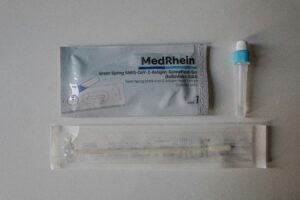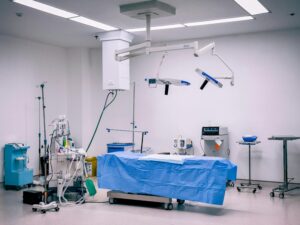ISO 13485 standard is an international guideline that sets an essential obligation for medical device manufacturers. Understanding its principles and requirements not only enhances the supply chain but also reinforces confidence in critical medical care products.
Why ISO 13485 Certification Is Non-Negotiable for OEMs
ISO 13485 standard is a vital warranty for OEMs (Original Equipment Manufacturers) and CMs (Contract Manufacturers) to design and produce medical devices. The reasons why this document is key are the following:
- Regulatory compliance. ISO 13485 Certification guarantees market entry for medical devices because they obey global laws.
- Risk mitigation. It reduces the risk of manufacturing defects by stopping and eliminating them promptly (ISO 14971).
- Device quality assurance. Ensures value in design, prototyping, high scale production, and post-sale.
- Customer and regulatory trust. Demonstrates to customers the high-quality principles applied, reducing liability risk.
- Preparing for the future. By next year (2026), the Quality Management System (QMSR) of the Food and Drug Administration (FDA) will be compliant with ISO regulatory certifications.
In conclusion, an ISO 13485 compliance is necessary to avoid affectations to end users (patients), avoid rejection due to regulatory laws for health devices and to maintain favorable business results.
Core Requirements Your Manufacturer Must Fulfill
The ISO 13485 standard requires medical device manufacturers to implement these mandatory protocols by implementing the following:
Risk Management (Clause 7.1 + Integration with ISO 14971)
For medical compliance and integration with ISO standards, the company must submit a risk management file for each device that includes:
- Design risks.
- Production risks.
- Usability risks.
- Documented risk controls.
Consequently, the manufacturer must conduct a design risk analysis and implement safety measures to prevent them.
Process Validation (Clause 7.5.6)
The following are the critical processes that require approval under clause 7.5.6 of the regulation:
- Sterilization (EO, radiation, steam).
- Software used in production/testing.
- Cleaning processes (for reusable devices).
These regulatory certifications also include installation, operation, and performance qualification (IQ/OQ/PQ) quality protocols.
Documentation Control (Clause 4.2)
For this control, the company must submit certain required documents for its products, which include those listed below:
- Quality Manual.
- Standard Operating Procedures (SOPs).
- Master Device Record (MDR) and Device History Record (DHR).
Traceability rules also apply, including the use of Unique Identifiers (UDIs) for batches and a change control log for design updates.
Supplier Management (Clause 7.4)
For this provision, the manufacturer must submit lists of approved raw material promoters after they have undergone prior evaluation. Additionally, the producer must present a Certificate of Analysis (CoA) for each batch.
Post-marketing surveillance (Clause 8.2.1)
Requirements include a system for tracking customer complaints, adverse events, and periodic data analysis to detect trends (e.g., recurring defects).
How Class I and II Devices Are Covered Under the Standard
Typically, the authorities frequently examine high-risk Class III devices; however, the ISO 13485 standard also applies rigorously to Class I and II devices as follows:
Class I Devices
These are low-risk, e.g., surgical gloves and manual stethoscopes, whose significant demands are as follows:
- Elementary documentation controls (SOPs, labeling checks).
- Provider controls (e.g., certification of latex-free gloves).
Moreover, a complete plan ruling is not required except when they are sterile or have a measuring use. Fabrication must also pass biocompatibility analysis (ISO 10993) and endorse the integrity of the product packaging.
Class II Devices
These are products that pose a moderate risk, such as infusion pumps, intravenous equipment, and pregnancy tests, among others. The contract manufacturing medical units must meet the following strict manufacturing standards:
- Mandatory design controls (Annex A of ISO 13485).
- Process validation (e.g., validation of IV bag sealing).
- Software validation (if the device includes software).
These three principles are mandatory, and the manufacturer must meet them to get approval for this class of devices.
Not all Class I/II devices are the same.
Class I and II units can have diverse features; some are sterile, others are non-sterile. For example, a non-sterile Class I scalpel has fewer regulatory requests than a sterile Class I dressing.
Additionally, the measurement utility introduces complexity, as a Class I thermometer must meet accuracy criteria, unlike a Class I bedpan.
What Certification Demonstrates
The ISO 13485 standard is more than a requirement; it is a verified assurance of a manufacturer’s ability to produce safe and reliable medical devices. This also demonstrates the following:
Operational Availability
In consistent processes, the manufacturer documents, controls, and validates workflows for design, production, and distribution.
For example, if a catheter manufacturer is certified, it indicates that its extrusion, coating, and packaging processes ensure repeated verification, ensuring compliance with stated specifications.
Another factor is the reliability of the supply chain, which ensures there are no last-minute surprises with device quality assurance.
History of successful audits
Certification also demonstrates the success of the manufacturers in audits under different circumstances, such as those listed below:
- Third-party verification: Certification requires passing audits from Notified Bodies (EU) or registrars (FDA markets).
- Absence of significant non-compliance: A certified company has resolved critical deficiencies (e.g., incomplete risk assessments, deficient CAPA systems).
- Possibility of sudden audits: Some programs require unannounced audits (such as MDSAP), which keeps manufacturers always prepared.
In short, they achieve success in medical OEM compliance and the legal regulations required for each product in this range.
Regulatory alignment
The regulatory association, determined by the adoption of criteria such as ISO 13485, accelerates FDA approvals and streamlines compliance in key markets.
- Faster authorizations because certified producers line up with the ISO 13485 standard.
- Compliance with the EU MDR/IVDR for the certification covers about 80% of the QMS requests necessary for CE marking.
- Global market entrance: because Canada (CMDCAS), Japan (JPAL), and Australia (TGA) have already recognized it.
- Regulatory convergence reduces barriers for manufacturers, improving processes and facilitating access to international markets with greater efficiency.
Commitment to a culture of quality
- Goes beyond simple ticking boxes. Manufacturers train employees in risk-based thinking, not just unthinkingly following SOPs.
- An authentic culture of quality goes beyond formal compliance, building teams with a preventive mindset and robust systems:
- Proactive improvements. A robust Corrective and Preventive Action (CAPA) plan ensures the permanent resolution of recurring problems.
- Earns customer trust. Hospitals and distributors prioritize certified suppliers to reduce liability risks.
By integrating risk-based thinking and effective CAPA processes, contract manufacturing not only meets standards but also transforms manufacturers into strategic partners who value sustainable excellence.
RexMed’s Certified Manufacturing Scope and Capabilities
In short, medical device manufacturers must implement the ISO 13485 standard in their quality management systems. Additionally, FM 82718 certification for both sterile and non-sterile merchandise reinforces OEM trust.
This approval not only guarantees excellence in design, manufacturing, and after-sales service, but also enhances the supply chain and mitigates risks through integration with ISO 14971.
In RexMed, these authorizations serve as a tactical differentiator, confirming our ability to meet critical regulatory and ISO 13485 requests, such as hazard management, procedure validation, and document traceability. We meet regulatory requirements and position ourselves as a confidential partner in an industry where excellence saves lives.






